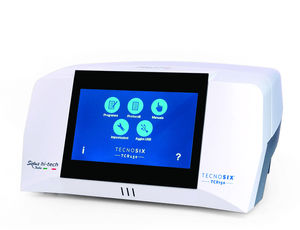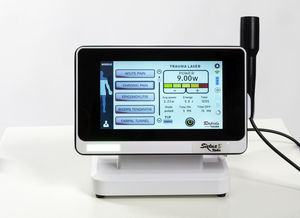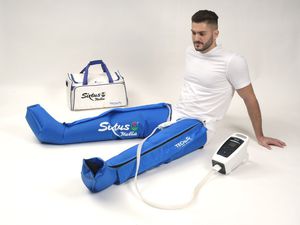
Orthopedic treatment ESWT unit Urtosix EMCtable-top
Add to favorites
Compare this product
Characteristics
- Applications
- for orthopedic treatments
- Ergonomics
- table-top
Description
Shockwave therapy uses a shockwave device that produces sound waves. This technique was developed in the 1970s to treat calculosis in urology, but since the technology was improved in the 1990s, it has also been introduced in orthopaedics and physiotherapy.
But what does this therapy consist of? Shock waves, i.e. audible waves generated by a specific device, are concentrated on the specific part of the body that needs to be treated.
How does shockwave therapy work?
Shock wave therapy involves the concentration of sound waves in a circumscribed area to achieve a number of benefits.
Shockwave therapy is based on the energy of the waves used: depending on their dosage on the affected area, they can shatter kidney stones or stimulate blood flow and cell metabolism. In general, shock waves are short mechanical-acoustic waves that penetrate water and tissue without ever losing power. But that is not all: their force is capable of penetrating elastic tissue, such as muscle and adipose tissue. As a rule, these waves can be generated outside the human body by means of a special device consisting of a cushion filled with water; with it, the therapist channels the transmitted wave energy into the affected area, calculated with extreme precision to avoid any side effects.
A distinction is made between radial and focused shock waves.
Radial shock waves have less energy A A distinction is made between radial and focused shock waves.
Radial shock waves have less energy
and are flatter, so that the power is localised to the emitting probe and spreads over the affected area in a radial manner, with rapid dispersion of pressure and a greater enlargement of the treated area.
Catalogs
Electromedical Devices
32 Pages
Related Searches
- Tabletop laser
- Nd:YAG laser
- Tabletop physiotherapy
- Millisecond laser
- 2-channel physiotherapy
- Heat therapy unit
- Class 4 laser
- Trolley-mounted physiotherapy
- 1-channel physiotherapy
- Extra-corporeal shockwave therapy unit
- Physical therapy laser
- Pressure therapy unit
- Magnetic therapy unit
- Musculoskeletal disorder ESWT unit
- Physical biostimulation laser
- Ultrasound stimulator physiotherapy
- Leg pressure therapy unit
- Table-top ESWT unit
- Tecar therapy unit
- Cryotherapy unit
*Prices are pre-tax. They exclude delivery charges and customs duties and do not include additional charges for installation or activation options. Prices are indicative only and may vary by country, with changes to the cost of raw materials and exchange rates.









